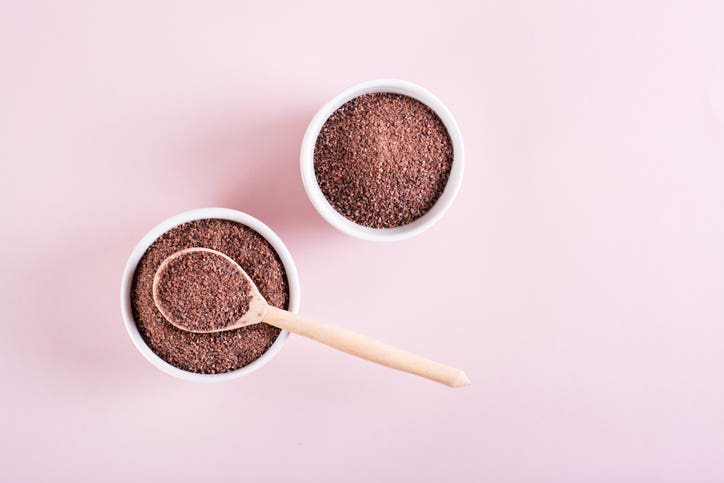
17 Tips for Healthy Eating and Living
Good eating habits aren’t about willpower. We have a limited supply of willpower. So while you can coast by on it for maybe the first couple weeks of January, it will eventually run out. Instead, if you want your healthy lifestyle to last, the secret is entirely about making healthy habits easier. For most of us, time, energy, and money are in short supply. So reduce the time it takes to plan, shop for, and prepare your meals. Or reduce the cost if that’s your biggest goal.
I have two young children and work hard. As a result, I’ve streamlined my diet so it’s affordable and doesn’t take a lot of time. Here are some of the best tricks, rules, and tips I rely on to minimize time, energy, and effort.
1. Serve your salad (and your family’s) right when you start cooking dinner.
Since you’re hungry and the hot food isn’t ready yet, you’ll fill up on more healthy salad than you would if you served it just before the meal hits the table (or worse, at the same time). Over time, increase the size of the salad, and lessen the amount you’re cooking.
2. Keep ingredients on hand for no fewer than three dinners-in-a-pinch.
These are meals that you can make with little effort and time, and ones you can fall back on when your day gets away from you. Having these ingredients on hand is a good tactic to prevent going out to eat at the last minute or ordering takeout, which can lead to several unhealthy meals in a row due to inertia or leftovers. Your dinners in a pinch might not be as healthy as you’d like — you’re looking for ingredients that can sit for a few weeks without going bad, so not a lot of fresh veggies — but they’ll get you through a stressful day or two until you can get back on track.
3. When you discover a meal that meets the big four criteria (tasty, healthy, quick, and cheap), for the love of all that is holy, write it down!
Keep the growing list of these meals in your wallet or phone (with ingredients, or links to the recipes online) so that you can stop by the store on the way home from work when you realize you’ve got nothing for dinner.
4. Anytime you make veggie burgers, make a double or triple batch.
Freeze the leftovers, and when you need a quick, cheap, and easy healthy meal, crumble one on top of a salad. Or put it in a pita. Or eat it by itself. Five-minute meal.
5. Same goes for soups, which you can thaw and serve over pasta or rice for an easy meal.
6. One more on this theme: make a big batch of pesto and use a melon baller to freeze 2-tablespoon size balls.
For a fast weeknight meal, thaw with a few tablespoons of hot water and toss with pasta.
7. Start with a meal that’s healthy but not hearty (salad, soup, or the pasta with pesto above).
Add chickpeas. Bam! Filling meal.
8. Don’t rule out vegan meal services, even if you’re on a budget.
Economies of scale allow them to purchase food for way cheaper than you can, so even after the cost of delivery and their markup, you might not pay much more than you would if you shopped yourself. Plus, oh yeah, you don’t have to shop. Or prep most of the ingredients. Or think about what to make. Or eat the same old thing again.
9. Don’t buy junk food at the grocery store.
Just flat-out refuse to do it. Make it your policy. If it’s not in your house, you’re so much less likely to put in the effort to go get it.
10. Put out a snack bowl in a high-traffic area (we do it for our kids, but it also works for grown-ups).
Fill it with whole or chopped fruits and veggies, a trail mix, maybe even some hummus. Then when your kids pass through or do something at the table, you’ll see them snacking on healthy food without even realizing they’re doing it. Hat tip to Dr. Fuhrman.
(RELATED: Kid-Friendly Snacks in 5 Minutes or Less)
11. Chop your salad vegetables for the week all at once, on the weekend.
Easy to do, but so easy not to do. Do it.
12. Make a big batch of rice (or another food you eat often) to last you the entire week.
I cook a lot of Indian food, so rice is a big one for me, but this works just as well with other grains and pseudograins like millet, quinoa, and bulgur. And you can do it with beans and vegetables too, though veggies generally don’t keep quite as well in the fridge. But the freezer is always an option!
13. If you’re stuck for meal planning ideas because you’ve got too many options (I’m thinking of the thousands of recipes in the cookbooks on your shelf), give yourself some constraints.
Pick a fresh veggie you need to use up, and search the index of a favorite cookbook for that ingredient. Or pick a theme for each night of the week — by ethnicity, color, anything — and search within those parameters. Inspired by Dr. Seuss and Austin Kleon and every other artist who found her greatness by limiting her tools.
14. Follow a “fruit first,” “salad first,” or “water first” rule if weight loss is part of your health goals.
This way, there’s no “missing out” on anything more calorie dense—just a natural desire to eat a little less of it.
15. When your greens start to go, move them to the freezer to use for smoothies.
Start with small amounts, and you might be surprised at how little you can taste that extra nutrition.
16. Skip certain herbs and spices or make substitutions when it’ll save you a grocery trip or time in the store.
Chefs who create recipes are artists, and if your goal is to experience the highest expression of the chef’s creativity, then yes, you should follow the recipe exactly. But for you, the guy or girl who just wants to start eating well and to do it as simply as possible, then it’s not going to matter much whether you use fancy sherry vinegar or substitute the apple cider vinegar you’ve had in the cupboard for the past two years.
Don’t be afraid to take a lot of substitutions and omissions. Plain old Tabasco can stand in for Sriracha or chili oil. If you don’t have cilantro, try basil or parsley if you’ve got either one. Or just Google “substitution for ____” and go with it.
Sure, maybe something will taste weird now and then. But in the long run you can save a lot of money and effort this way, and almost nobody’s going to notice.
17. If you’ve tried and failed to go vegetarian, vegan, or whole-foodist (or harder, to get your whole family to do so), bite off a smaller chunk.
Pick a time in the morning and follow your ideal diet until that point. As you get comfortable and build a string of successes, slowly move the line further back in the day.

About the Author

About the Author
Matt Frazier
Join our mailing list
Get free recipes and the latest info on living a happy, healthy plant-based lifestyle.
By providing your email address, you consent to receive newsletter emails from Forks Over Knives. We value your privacy and will keep your email address safe. You may unsubscribe from our emails at any time.